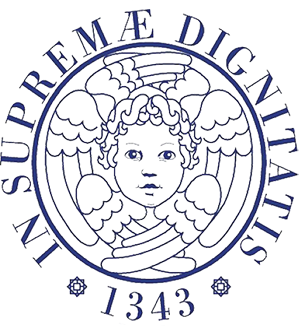1) DEFINITION
The intervention of “radical nephrectomy” involves removing the kidney and the adrenal gland together with the surrounding fat. When the kidney damage is not in contact with the adrenal gland, the latter can be spared.
2) INDICATIONS
The intervention is usually performed in the case of renal tumors with a diameter greater than 4 cm. Below this size, a tumor mass is removed by saving the kidney. However, but only in particular cases, the indication of radical nephrectomy can be extended to a mass less than 4 cm in diameter as well as the removal of the mass alone can be performed for larger tumors. The decision is often taken prior to the surgery, sometimes during the surgery.
Radical nephrectomy aims to remove the tumor mass surrounded by healthy tissue, so as to reduce the risk that cancer cells remain that could be responsible for relapses of the tumor. The ultimate purpose of this surgery is to bring the patient to healing. This can only happen if tumor cells have not already migrated to other distant organs (lymph nodes, lungs, brain, etc.) prior to the surgery, where new masses called metastases will emerge. In their presence, the surgery does not reach the goal of healing from cancer but it is also useful in preventing bleeding and abdominal pain; It can also facilitate the action of subsequent therapies (chemotherapy, immunotherapy) which alone have not proved effective in treating this disease.
3) DESCRIPTION OF THE TECHNIQUE
The correct execution of radical nephrectomy involves sequencing: incision that can be on the side (hip) or front transperitoneal (abdominal), ligature and section of the kidney vessels, then the binding and section of the ureter, and finally the extrafascial isolation of the kidney and its removal. The most commonly used access is the transperitoneal one, although in special cases it can be used with the lumbotomy. In practice, along with radical nephrectomy, a locoregional lymphadenectomy (removal of lymph nodes) is performed which has the purpose of “staging” ie defining the extent of the disease. At the end of the surgery, a silicone tube is used to drain the secretions. This drainage is usually removed a few days later.
Alternatively, radical nephrectomy may be performed with laparoscopic approach by means of instruments introduced through some small holes on the abdomen. At the end of the surgery, the kidney is extracted by doing an incision even though that is definitely smaller than the one provided by classical technique.
N.B. In cases where the excessive size of the tumor does not allow proper or a lymph node involvement or there is anesthesia contraindication during the procedure or even in case of emergencies caused by intraoperative impingement, it is always possible during laparoscopic procedure to go through the traditional open surgery.
4) DURATION OF THE INTERVENTION
Radical nephrectomy with frontal access (abdominal incision) lasts from 90 to 180 minutes.
The duration of laparoscopic surgery is usually longer when compared with traditional technique and can range between 150 and 210 minutes.
5) PREPARATION FOR THE INTERVENTION
In most cases, intraoperative blood loss is such that no blood transfusion is needed. However, it is prudent to prepare 2-3 units (sachets) of concentrated blood cells (red blood cells) or, in cases where the waiting suggest so, it is advisable for the patient to undergo the removal of 2-3 units of his/her blood to be used in case of need (autotransfusion).
The preparation for laparoscopic surgery is completely similar to traditional surgery.
6) TYPE AND DURATION OF RECOVERY
It is an ordinary admission lasting about a week. Postoperative pain is always easily controlled by drugs. Already on the first postoperative day (the day after surgery), compatible with the general conditions, the patient is invited to sit on the bed. On the second day it is possible to start walking and eating. Suture points can be removed from 7 to 10 days after surgery.
The laparoscopic approach usually allows a shorter period of hospitalization. Postoperative pain is reduced compared to open surgery and consequently reduced the use of painkillers.
Even on the first day the patient is invited to sit and can then walk. On the second day the drainage tube can be removed and the patient can be discharged the following day.
8) ADVANTAGES
As a well-coded technique, radical nephrectomy allows, in the presence of organ-bound disease, good healing chances without excessive risk for the patient.
Laparoscopic surgery allows a reduced perception of postoperative pain, a more early mobilization during hospitalization, and a shorter recovery of social and work activities.
9) DISADVANTAGES
The loss of a kidney does not involve kidney failure and therefore particular modifications to its eating habits and / or work activities unless the other kidney is compromised. Only then, after surgery, the patient may be forced to follow a special dietary regime or, in the most severe cases of renal failure, to undergo dialysis therapy.
The laparoscopic approach requires a longer duration of surgical intervention and consequently longer duration of anesthesia.
10) COMPLICATIONS
Common complications such as myocardial infarction, stroke, heart failure, pulmonary embolism, pneumonia, thrombophlebitis, and others specifically related to the operation in question, such as bleeding, may occur. Intraoperative bleeding of the spleen may result in the removal of the spleen itself (splenectomy) in 1.5% of the cases of left radical nephrectomy.
All of these complications can also occur in laparoscopic surgery.
11) ADVICE AT DISCHARGE
The patient is discharged with:
- antithrombotic therapy;
- antibiotic therapy;
12) HOW TO BEHAVE IN CASE OF COMPLICATIONS AFTER DISCHARGE
Deep asthenia (especially when it raises acutely), respiratory difficulties are the reason of an urgent re-evaluation by doctors who have been taking care of the patient during hospitalization.
13) CHECKS
The checks are decided based on the anatomopathological staging and explained at the time of issuing the final letter of discharge.

